Have you given special thanks to your gut microbiome today? As you go about your day, trillions of beneficial gut bacteria living inside your digestive system keep you healthy and well. Known as the gut flora, a constellation of more than a thousand different species, your gut microbiome is unique, complex, and dynamic – and there are simple steps you can take every day to help it thrive. Curious to learn more?
A healthy gut flora supports digestive health and much more: think enhanced immunity, cardiovascular health, cognitive function, energy, and mental health regulation. When it comes to supporting gut health and beneficial bacteria, two substances stand out of the crowd. They are prebiotics and probiotics. Read on to learn what they are, how they’re different from one another, and how to make them a part of your wellness toolkit!
Prebiotics and Probiotics: What’s the difference?
Here’s a quick debrief on the difference between pre- and probiotics.
Prebiotics: Food for gut bacteria
Prebiotics are fermentable fibers naturally found in various foods. These carbohydrate compounds, such as oligosaccharides, are known to skip digestion in the small intestine and reach the colon instead, where they are fermented by the gut flora and feed healthy bacteria. Inulin, oligofructose, lactulose, and resistant starch (RS) act as prebiotics. So do other isolated carbs and carbohydrate-containing foods, like acacia gum, psyllium, banana, and whole grain wheat.
Probiotics: Live beneficial bacteria cultures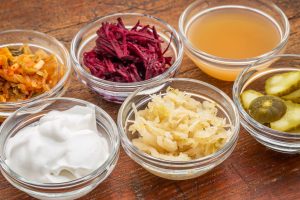
Probiotics are live microorganisms founds in fermented and cultured foods, such as sauerkraut, kimchi, kombucha, yogurt, kefir, miso, and various lacto-fermented pickles. Probiotic strains abound, but the ones most active in our overall health include: Lactobacillus and Bifidobacterium along with L. acidophilus, L. casei, L. plantarum, B. lactis, B. longum, and B. Bifidum. Known benefits of a probiotic-rich diet run the gamut from immune support to heart health, optimal digestion and lowering of anxiety and depression symptoms.
Why take pre- and probiotics together?
Prebiotic fibers like inulin, oligofructose, pectin, beta-glucans, and fructooligosaccharides (FOS) are an essential substance to feed beneficial gut bacteria and get the most out of your probiotic-rich diet plan or natural supplement routine.
Researchers agree that pre- and probiotics act synergistically. The term ‘synbiotics’ refer to a combination of pre- and probiotics, and highlights the probiotic microorganisms’ survival improvement in the gastrointestinal tract directly from the addition of adequate prebiotics. In other words, take them together, folks!
Pre- and Probiotic Rich Foods
Here’s a list of pre- and probiotic-rich foods to get you started.
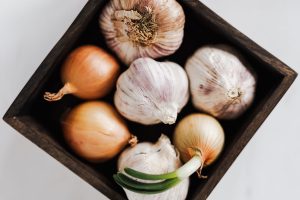 Prebiotic-rich foods
Prebiotic-rich foods
- Whole Oats
- Bananas & Apples
- Flax seeds (ground) and Chia seeds
- Burdock root (also called Gobo)
- Onions & Garlic
- Leeks
- Yams
- Legumes & Beans
Probiotic-rich foods
- Kefir
- Yogurt
- Fermented Vegetables & Pickles
- Miso
- Raw Honey
- Sauerkraut
- Kimchi
- Kombucha
Your ultimate microbiome reset
The gut microbiome has evolved with humans in a symbiotic relationship that nurtures our health via pathogen protection, immune system training, intestinal barrier integrity, and the creation of important nutrients like vitamins K and B, as well as short-chain fatty acids. Along with pre- and probiotics, a healthy microbiome diet and lifestyle includes the following musts:
Reduce sugar consumption & avoid artificial sweeteners
Excessive sugar intake (from sweets, convenience foods, or sugary drinks) and the use of artificial sweetening agents such as aspartame, saccharine, and sucralose have been linked with gut dysbiosis and impaired gut flora.
Avoid unnecessary antibiotic use
While antibiotics can be life-saving when used correctly, the overuse of antibiotics (and its consequences: antibiotic resistance) is a genuine and growing concern within the medical community. Misuse of antibiotics includes: sore throat, cough, bronchitis, stomach flu, and other viral infections. Misusing antibiotic disrupts gut microflora.
Manage stress levels
Healthy gut bacteria is sensitive to stress. For better gut health and a happy microbiome, practice stress management techniques like exercise and meditation, along with taking real measures in your life to lower sources of stress: declutter your schedule, learn to say ‘no’, and leave space in your calendar for rest and play.
Try the Four R’s: Remove, Repair, Replace, Re-inoculate
Remove known allergens and irritants from your diet, repair your gut with healing foods like healthy fats and greens, replace low-nutrient meals with nutrient-packed vibrant swaps, and re-inoculate your gut with prebiotic fibers and probiotic-rich cultures.
Should anyone NOT take prebiotics and probiotics?
Folks suffering from small intestinal bacterial overgrowth (SIBO), a gastrointestinal disorder in which excessive bacteria populate the small intestine, have often been advised to skip probiotic-rich cultured foods along with avoiding the fermentable fibers that make up prebiotics. But yeast-based probiotic like Saccharomyces boulardii and SIBO-friendly fibre, such as CanPrev’s Fibre Feel can make a healthy addition to a FODMAP and SIBO-approved diet.
For those who would like to improve their overall digestive health, a multi-strain probiotic supplement can be beneficial in promoting a healthy balance of gut bacteria, such as CanPrev’s Pro-Biotik 15B – a shelf-stable probiotic in capsule form, containing forty billion CFU’s (colony forming units – a measure of friendly bacteria activity). Probiotic supplements typically begin to lose potency and effectiveness as they move toward their expiry date. However, the impressive Pro-Biotik 15B can guarantee an activity level of 15 billion CFU’s, which uncommon within the probiotic supplement space.
An option for the little ones? CanPrev’s Pro-Biotik Powder – Toddler to Teen, a fine and tasteless powder that dissolves easily in any liquid.
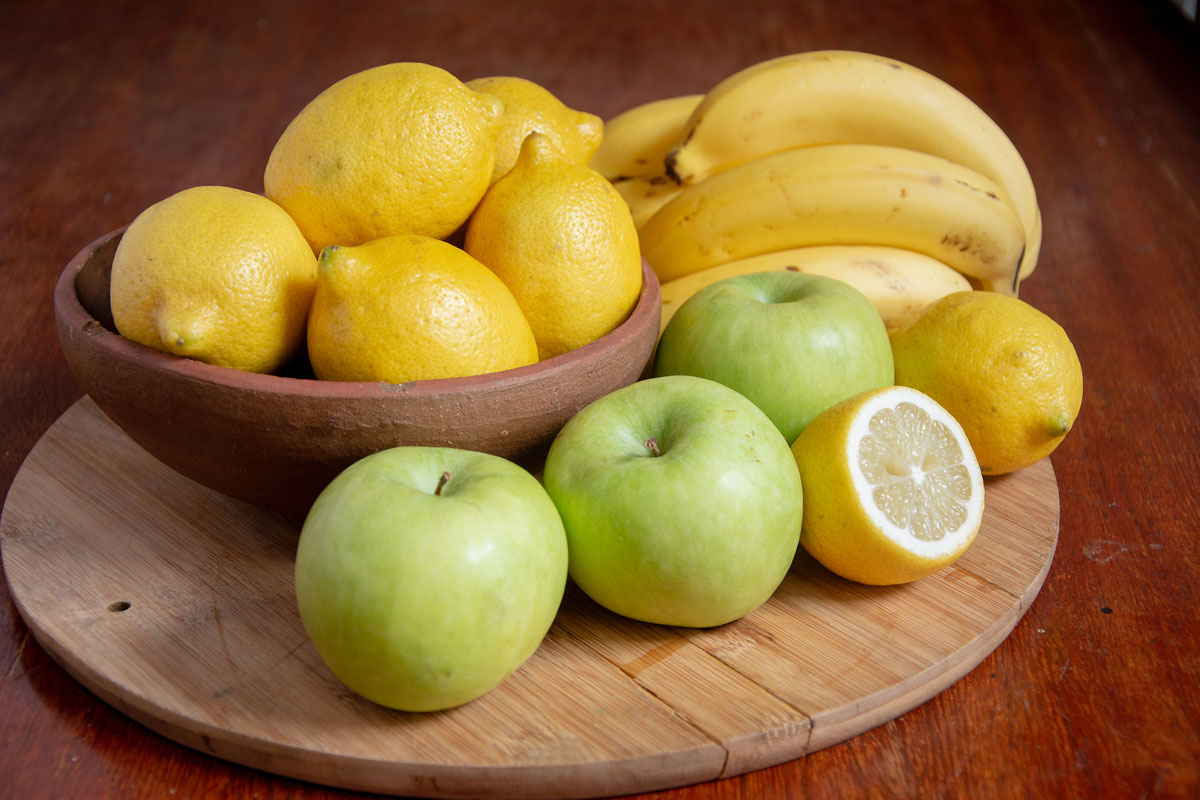
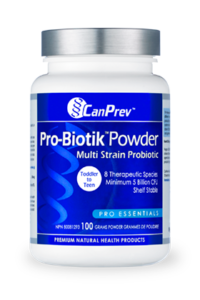
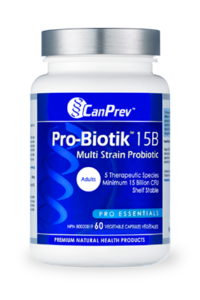
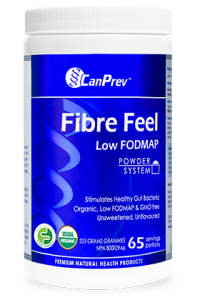
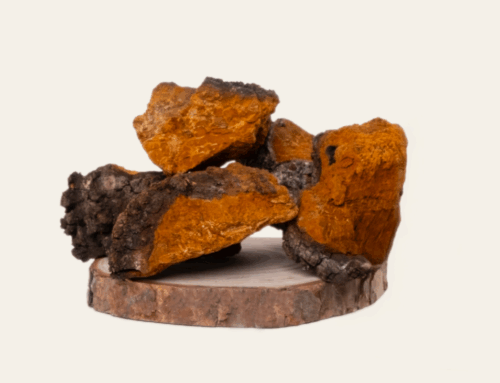


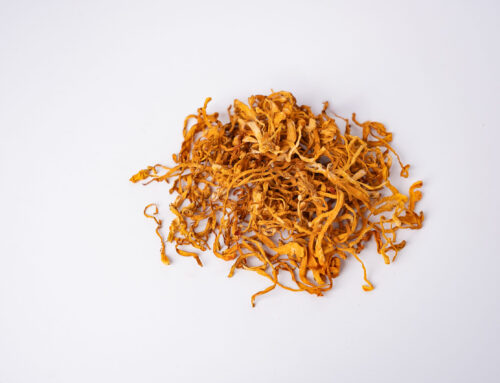

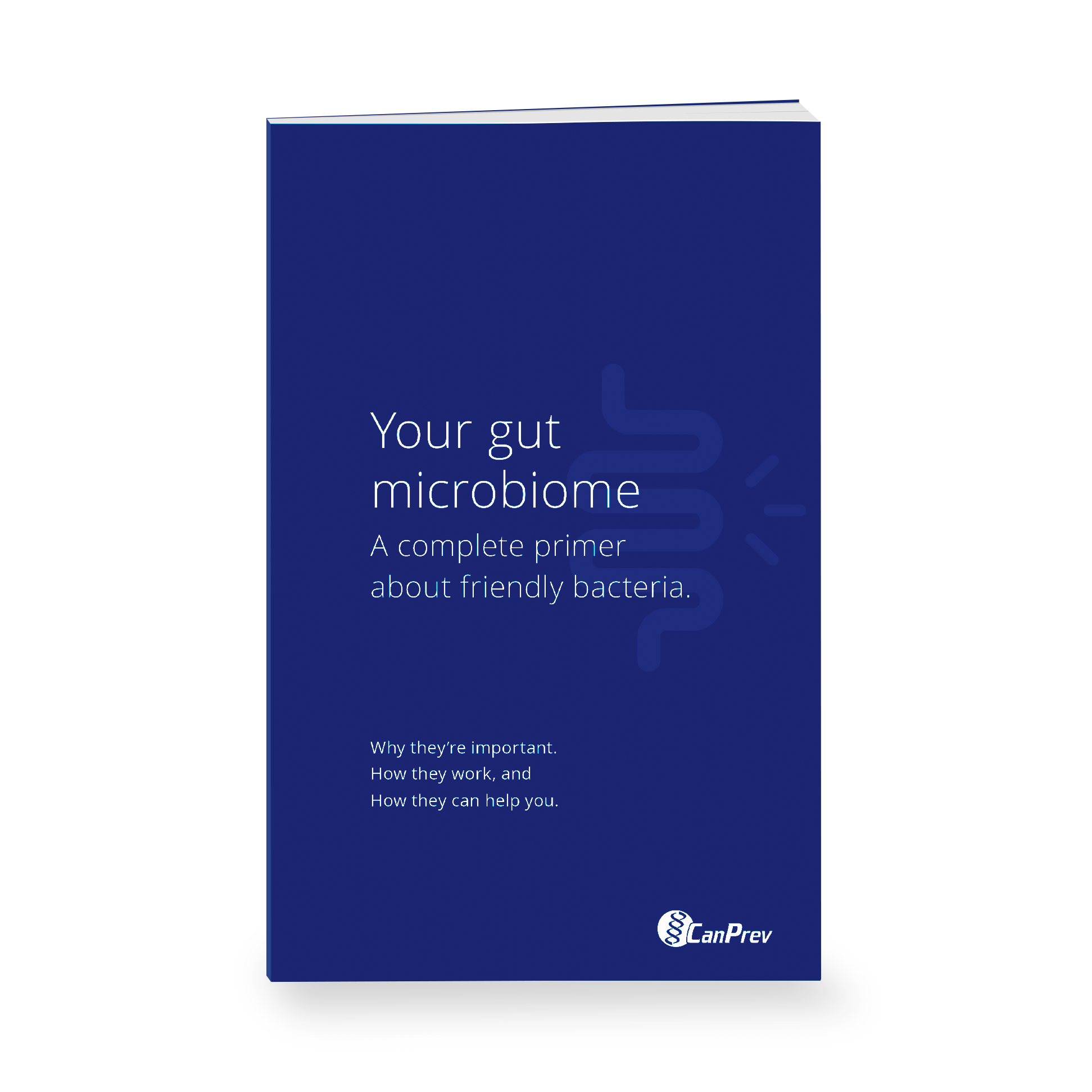
Regarding Canprev Pro-Biotik 15 product – Since there are 5 different Lactobacillus and Bifido bacteria in the one capsule
can they compete with one another and therefore cancel the effectiveness and efficacy of the product?
Hi there, thank you for your question. The inhibitory ability of Lactobacillus and the high tolerance level of Bifidobacteria make a good pair to produce a MSP (multi-strain probiotic) (Chapman et al., 2012). Even though mutual inhibition of strains is one of the main factors to be considered when formulating a mixed probiotic, it should be noted that this criterion does not limit the effectiveness of the MSP. This is because; different probiotics act differently to enhance nutrient utilization and growth performances of various species. Hope this helps!